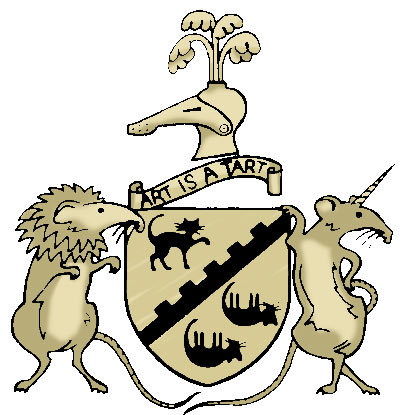The Kanneh-Mason Family – Videos
In October 2016, when the Kanneh-Mason Children were generally unknown, we invited the family to make some videos at Lampeter House. Since that time Sheku and Isata have burst on the classical music scene and both are now superstars in the classical music world that have topped the classical music charts. Sheku played at Megan and Harry’s royal wedding . These are the videos we made when they came to Lampeter house and they the family as they were before stardom struck.
|
|
Following his success Sheku was invited to perform at two BBC Prom concerts and signed a contract to make CDs with Decca. Within a couple of years he had sold more CDs than Julian Lloyd Webber and was travelling to perform all over the world.
This is a picture of the seven children:
 |
| Kadiatu (Kadie) and Stuart Kanneh Mason with Sheku and Braimah (2015 Nottingham Post) |
The Nottingham family are a rich cultural mix; Kadiatu’s mother is Welsh and married to a man from Sierra Leone, their English father Stuart has parents who immigrated from Antigua. The family rejoice in their cultural diversity, they all have Welsh names and continue their close ties with Wales, the Caribbean and Sierra Leone. Both of their parents have always loved classical music and learnt to play the piano as children, so it was a natural decision for them to buy a piano after their first child was born; Kadiatu also played the clarinet as a child and is an academic whilst Stuart has a physics degree and masters degree in maths. Stuart commutes to work in London from Nottingham, instead of buying smart cars and other luxuries every penny the family earns has been channelled into giving their children the best opportunities in life. Isata chose the piano which seems to have influenced the other children to follow her into musical careers.
Rachmaninov Trio élégiaque No.1
and two pieces of Isata playing solo
Postscript:
I am not particularly knowledgeable about music, often I have to work harder than others to track the melodies, rhythms and musical structures in complex classical pieces, but the emotional rewards are always worth it. From the moment I first saw this family I was a fan, this is why:
Music is found in all cultures however primitive or isolated. It is as if nature has encoded Music into our DNA and it is as essential to humanity as language and speech. Some years ago I read a book, “The Singing Neanderthals: The Origins of Music, Language, Mind and Body” by Prof Steven Mithen, in which he posited that music and singing were precursors to language. He painted an image of groups of Neanderthals without language abilities dancing, grunting and warbling around their hearths for tens of thousands of years until the language speaking Homo sapiens arrived to Southern Europe with cave painting and sculpture. He suggested that musical activity in our hominid ancestors generated empathy and set off a chain of brain development that in Homo sapiens mutated into our abilities for “theory of mind”, intensely complex self knowledge, social and cultural cohesion, and that from these musical beginnings language was born. Music led to the development of language followed by the big bang of creativity that led to agriculture and civilisation.
Mithen was speculating and maybe he is wrong, but his point is a good one; music harmonises emotions across audiences in extremely powerful ways. This trait was well known to ancient generals who marched their armies to music in the safe knowledge that this will make their soldiers more comradely and willing to sacrifice their lives for each other and their tribes, in our present day society music still has a strong place in rituals that bring marriages, families, tribes and nations together; what would the Olympics be like without the collective playing of each other’s national anthems from around the world?
In my quest to improve my drawing I had an idealistic view that art has a good purpose, as I have grown older I have come to see that purpose to be about reaching inside each other’s minds and sharing qualia in a mingling of spirits, but I have never been so naive as to believe that producing or loving good art automatically equates with having a well developed sense of humanity. Tyrants like Stalin loved the ballet and Hitler loved watercolours and architectures, but the humanising effects of art were not enough to stop them being responsible for the deaths of millions of there fellow citizens. This is a sad fact; Art’s power to bring us together in a mingling of our spirits can be embraced, ignored, subverted and misused. My conclusion has been that art, like speech, comes with responsibility. I have always questioned goodness and badness in art and often asked myself if there is such a thing as purity in art?
The Kanneh Masons are fascinating to know. The family seem to be bonded in a warm glow of empathy and cooperation. The eldest sister started the process, but now they are all in it together, sharing tunes, unifying melodies and harmonies within their family. In the little time I have been with them I have witnessed this depth of communication and extreme closeness. They are not unique, they are ordinary people, but it has been wonderful to watch what has happened inside their family which seems to me to be one of the purest expressions of “good art” I have ever experienced. In this troubled world we need more families like the Kanneh-Masons and more “good art”.
Kanneh Mason Home Page http://www.kannehmasons.com/
Sheku Kanneh Mason Biog http://www.kannehmasons.com/biogs/sheku-kanneh-mason/
Kanneh Mason You Tube Site https://www.youtube.com/user/Darkwoodnew
Two Bad Mice Mucical Products : https://shop.twobadmice.com/?s=music&post_type=product




